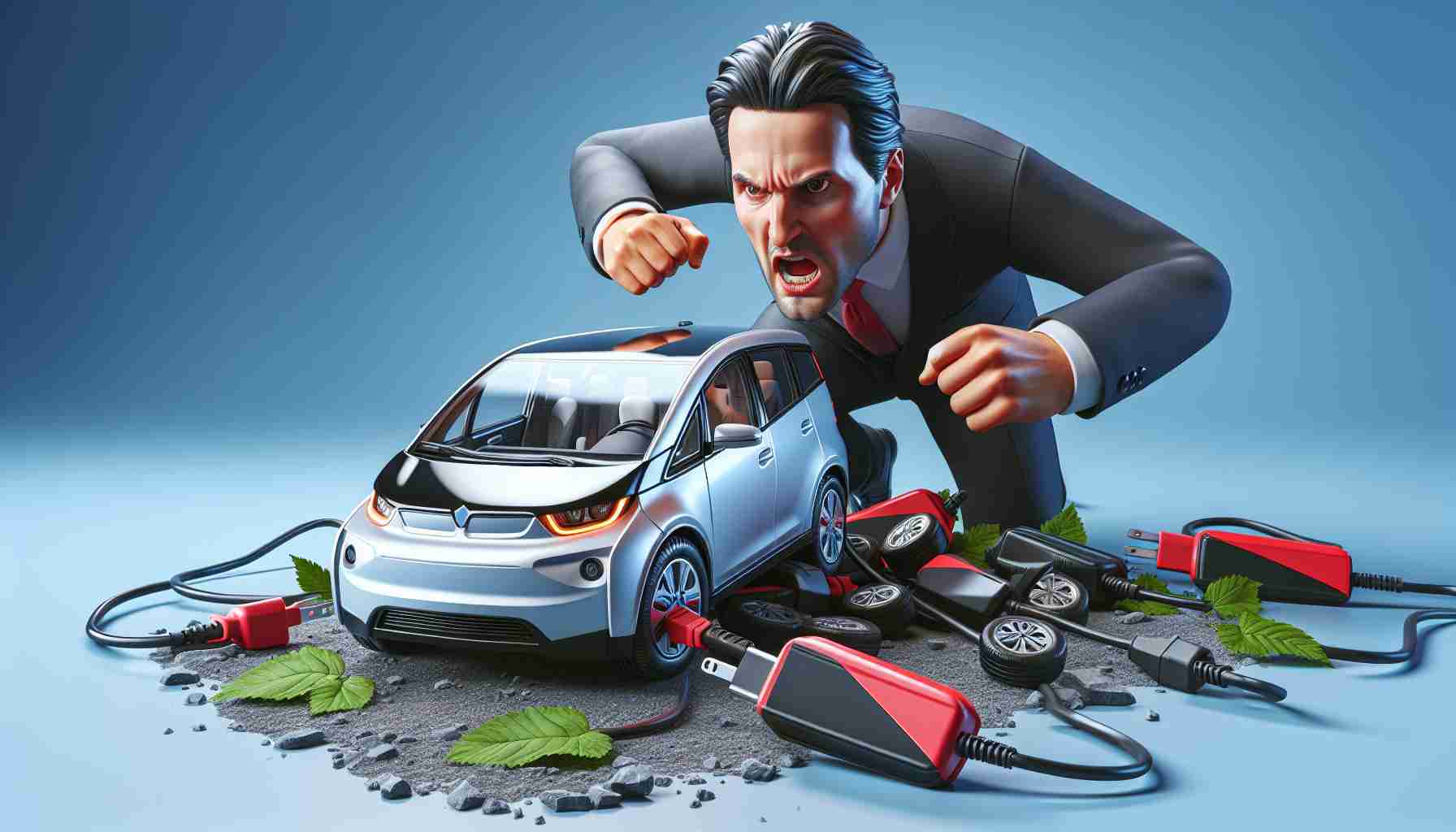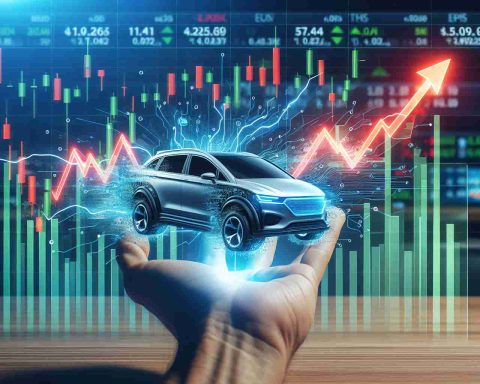The Future of Electric Vehicles Under Fire
In a bold move on his first day in office, President Donald Trump announced significant changes to federal and state support for electric vehicles (EVs). His executive order claimed to eliminate what he referred to as the “electric vehicle mandate,” but investigations reveal that such a federal mandate never existed.
Trump’s order seeks to revoke recent federal incentives for EVs, including the lucrative $7,500 tax credit and support for the infrastructure necessary to charge these vehicles. However, changing these incentives may require complex legislative actions, as the tax credit was part of a larger law passed in 2022.
California and other states are pivotal in this electric vehicle debate, as they have set ambitious targets to transition to zero-emission vehicles by 2035. These regulations impact roughly a quarter of the U.S. automotive market. In the past, Trump attempted to curtail California’s authority over air pollution regulations, a move that ended up in legal battles and could potentially resurface.
Despite these challenges from the Trump administration, major automakers remain committed to embracing EV technologies. Industry analysts suggest that the continued federal support for EVs is crucial for U.S. manufacturers to stay competitive, especially against the booming Chinese EV market. With electric vehicle sales surging, the momentum for EVs looks poised to withstand political developments, regardless of administrative changes.
Implicating the Future: Electric Vehicles and Their Global Ramifications
The push against electric vehicle (EV) incentives by political leaders reverberates well beyond the automobile sector, hinting at profound societal and cultural implications. As the world transitions to cleaner energy, the divergence in policies can deepen the societal divide over climate responsibility. Access to EVs, heavily reliant on incentives, may restrict opportunities for lower-income families, exacerbating inequities in who can drive sustainable vehicles.
Moreover, the potential environmental effects of a reduction in EV support are significant. The United Nations has projected that achieving net-zero emissions by 2050 is essential to mitigate catastrophic climate change. The enthusiasm for electric cars is a pivotal element of that strategy, as transportation accounts for a considerable share of global emissions. Should the current trend of dampened support continue, emissions could rise, undermining global climate commitments.
Looking ahead, there are tangible consequences for the global economy. Countries that invest in EV technology position themselves as leaders in a burgeoning sector, creating jobs and driving innovation. Meanwhile, nations lagging in EV adoption face potential economic stagnation as consumer demands shift towards sustainability. The rapid growth of the global EV market, expected to reach around $800 billion by 2027, highlights the urgency for cohesive policies that embrace this transition.
In summary, the trajectory of electric vehicles encapsulates not just technological evolution but also societal responsibility. Balancing political rhetoric with progressive environmental policies will be crucial as industries and consumers navigate an increasingly electric future.
The Electric Vehicle Landscape: Innovations and Challenges Ahead
Understanding the Evolution and Current State of Electric Vehicles
As the electric vehicle (EV) market continues to mature, several new trends, innovations, and challenges have arisen beyond recent political maneuvers. Here, we explore the multifaceted aspects of the EV industry, offering insights into the future landscape, consumer preferences, and market dynamics.
Key Features of Electric Vehicles
1. Swift Charging Technology: Recent advancements in fast-charging technology enable EVs to recharge in a fraction of the time previously required. Companies are developing ultra-fast chargers that can deliver significant power—up to 350 kW—allowing batteries to reach 80% charge in under 20 minutes.
2. Battery Innovations: The ongoing research into solid-state batteries promises higher energy densities, faster charging times, and enhanced safety. These batteries could significantly reduce dependency on lithium-ion technology, thereby addressing some sustainability concerns linked to battery production.
3. Vehicle-to-Grid (V2G) Technology: This emerging technology allows electric vehicles to act as energy sources for homes or the grid, facilitating a more sustainable energy ecosystem and potentially lowering homeowners’ utility bills.
Pros and Cons of Electric Vehicles
Pros:
– Reduced Emissions: EVs produce zero tailpipe emissions, contributing to improved air quality.
– Lower Operating Costs: EVs generally offer reduced fuel and maintenance costs compared to their internal combustion engine counterparts.
– Incentives: Government incentives can offset the upfront costs of EVs, making them more attractive to consumers.
Cons:
– Charging Infrastructure: While growing, charging stations are still less prevalent than gas stations, posing a challenge for long-distance travel.
– Range Anxiety: Many consumers still hesitate to switch to EVs due to concerns about battery range and charging availability.
– Initial Costs: The upfront purchase price of electric vehicles remains relatively high despite incentives.
Addressing Controversies and Limitations
The current political landscape influences the EV market significantly. The potential rollback of federal incentives can hinder growth, but many states, particularly California, continue to push for stringent emissions regulations. As a result, automakers are prioritizing compliance to maintain their market positions and meet consumer demand for greener options.
Market Insights and Trends
1. Investment in Sustainability: The automotive industry is seeing substantive investments aimed at making battery production more sustainable and scalable. Companies are exploring recycling processes for aging batteries, contributing to the circular economy.
2. Autonomous Technology Integration: Many EVs are increasingly equipped with advanced driver-assistance systems (ADAS), enhancing safety and paving the way for fully autonomous driving technologies.
3. Consumer Demand Shifts: A growing awareness of climate change is driving consumers towards sustainable transportation options. Research indicates that a significant portion of car buyers, especially younger demographics, prefer EVs over traditional vehicles.
Conclusion: Looking Ahead
The future of electric vehicles remains bright, bolstered by innovation, market demand, and an ever-growing commitment to sustainability, despite political and regulatory challenges. As advancements continue to emerge and the infrastructure improves, the EV sector is poised to transform the automotive landscape significantly.
For further insights on electric vehicles and related topics, visit EV World.













